1. Вы услышите четыре коротких текста, обозначенных буквами А, B, C, D. В заданиях 1–4 выберите цифру 1, 2 или 3, соответствующую выбранному Вами варианту ответа. Вы услышите запись дважды.
1. The girl was nearly late because…
1) She was looking for her mobile phone
2) She was waiting for her bus for a long time.
3) She was looking for her essays.
2. Writing essays regularly is very useful for …
1) increasing one’s motivation to learn.
2) improving your handwriting
3) learning the language.
3. One of the speakers was texting a friend to learn…
1) her friend’s test results.
2) Her test results.
3) If her watches are slow.
4. The female speaker likes the movie they are watching and calls it…
1) a French drama
2) a boring drama
3) a classical psychological drama
5. Вы готовите тематическую радиопередачу с высказываниями пяти разных людей, обозначенных буквами А, В, С, D, Е. Подберите к каждому высказыванию соответствующую его содержанию рубрику из списка 1–6. Используйте каждую рубрику из списка только один раз. В списке есть одна лишняя рубрика. Вы услышите запись дважды.
1. Exams are necessary.
2. Successful exam experience.
| Говорящий | A | B | C | D | E |
| Утверждение |
|
|
|
|
|
4. Exam preparation.
5. Why he/she failed the exam.
6. He/she enjoys taking exams.
6. Вы помогаете своему другу, юному радиожурналисту, проанализировать подготовленное им для передачи интервью. Прослушайте аудиозапись интервью и занесите данные в таблицу. Вы можете вписать не более одного слова (без артиклей) из прозвучавшего текста. Числа необходимо записывать буквами. Вы услышите запись дважды.
6. Age of the respondent __________ years old
7. Date of birth ________________ 30th, 2004
8. Favourite sports activity___________________
9. The school subject he/she is good at_______________________
10. The job he/she would like to do in the future_______________________
11.The language he/she wants to learn__________________________
12. Вы проводите информационный поиск в ходе выполнения проектной работы. Определите, в каком из текстов A–F содержатся ответы на интересующие Вас вопросы 1–7. Один из вопросов останется без ответа. Занесите Ваши ответы в таблицу.
1. What cultural and media subjects took the name of Gorky Park?
2. At what time is Gorky Park open to the public?
3. How can you get to Gorky Park by public transport?
4. What kind of films can you see in the open-air cinema in Gorky Park?
5. What entertainment does Gorky Park offer in the cold season?
6. What kinds of animals can you see in Gorky Park?
7. Why is Gorky Park a great place to be active?
A. Gorky Park, officially named Gorky Central Park of Culture and Leisure, is a very popular place with the residents and guests of Moscow. It covers about 250 hectares and stretches along the bank of the Moskva River. The huge park is actually very close to the centre of the busy city — it is between Garden Ring and Third Ring Road and you can easily get there by bus or by Metro. The nearest Metro metro station is Park Kultury, and there are a few more stations within walking distance.
B. Gorky Park was the first amusement park created in the Soviet Union. It was opened in 1928 and became a model for lots of other parks set up across the country. In 2011, Gorky Park had major reconstruction and the amusement rides were removed. The place turned into an eco-friendly zone which works non-stop and is accessible round-the-clock, day and night, seven days a week. There is no entrance fee.
C. Gorky Park is a large recreational zone in a megapolis which gives its people an opportunity to relax and entertain in the open air. However, not all the seasons in Russia are warm enough for outdoor activities. Does this mean that in winter Gorky Park turns into a deserted place? Of course not! Gorky Park turns into a huge skating rink where people skate along the alleys, beautifully decorated with colourful lights.
D. You may be surprised to find a club for young naturalists in Gorky Park but it is really there and it is called Green School. Parents think it is a very good idea as city children do not have lots of opportunities to watch animals. On the territory of Green School they can see rabbits, parrots, turtles and other animals. Apart from that mini-zoo, children are welcomed to the garden, greenhouse, woodwork shop and library.
E. A quarter of a million people visit Gorky Park at weekends, which is a convincing indication of its popularity. There you can see students getting ready for their tests on the green grass, people practicing yoga and those taking dancing or drawing lessons in the open air. The spacious park provides lanes for jogging, table tennis equipment and football and volleyball pitches. You can also hire a bike or take part in the numerous workshops.
F. Probably, there’s no person in Russia who has never heard of Gorky Park. Due to its popularity, it has been the setting for a number of films. The park was described in the novel Gorky Park by Martin Smith, which was later made into a film with the same name. The famous single Wind of Change by the rock band Scorpions refers to Gorky Park in the early 1990s. And, of course, Gorky Park, the Russian hard rock band that named itself after the park, contributed to the atmosphere of the place.
1) True 2) False 3) Not stated
Many Americans enjoy running marathons – a forty-two kilometer race. More than three hundred marathons were held in the United States last year and that number is expected to grow.
The New York City marathon is held every year on the first Sunday of November. It is a big sporting event with thousands of participants. One can see celebrities and famous sportsmen among the marathon runners. A famous cyclist, whose excellent physical condition helped him complete the marathon in less than three hours, admitted that the race was ‘the hardest physical thing he had ever done’.
While the New York City marathon is the biggest, the Boston Marathon is the oldest one. Boston’s is held in April. Boston is famous for the fact that Roberta Gibb became the first woman to unofficially run that marathon in 1966. At that time, people did not believe women could run marathons. The Olympics did not hold a women’s marathon event until 1984 in Los Angeles, California.
Today’s marathons welcome everyone. The popularity of the sport has spread among people who are interested in health and fitness. Many middle-aged people like to spend a weekend visiting a new city and running a marathon there. Some magazines call the middle-aged people of today the ‘marathon generation’. Forty-three percent of marathon runners in the United States are 40 years old or older. There are many organisations for marathoners. Nowadays many local running clubs offer training programmes that can prepare runners for the big race. A marathon really starts several months before the race. You need to run about five days every week to prepare. Most runs should be for half an hour. You should also try to run for an hour or more each Sunday. This is a very basic way for an average runner to prepare.
What you can’t prepare for is running in a big marathon with thousands of other participants. A marathon is in many ways a social event. There is a sense of community. The spectators are as much a part of the race as the runners. Almost every age group is present. At the start of the race there is a lot of shouting as the runners want to release some tension. They have three to five hours of hard running ahead of them.
However there are people who want to run farther. For them ultra-marathons are organised that take running to a different level. An ultra-marathon is any race longer than a marathon. One of the oldest ultra-marathons is held annually in California, USA. It is 160 kilometers long. Last year, 210 people finished the race. The winner, Graham Cooper, finished in eighteen hours and seventeen minutes.
13. The well-trained athlete finds a marathon a difficult activity.
14. Marathons in the USA are held in different seasons.
15. In the 20th century doctors believed that marathons were harmful for women.
16. The best way to prepare for a marathon is to join a running club.
17. Training for a marathon includes special diets.
18. At the start of a marathon the runners keep silent to save energy.
19. A marathon with a large number of participants is called an ultra-marathon.
Прочитайте приведенный ниже текст. Преобразуйте слово, напечатанное заглавными буквами в скобках так, чтобы оно грамматически соответствовало содержанию текста. Заполните пропуск полученным словом.
It may sound strange but I started roller skating when I was relatively old. A friend of mine gave me a pair of roller skates for my __________________ 20.(EIGHTEEN) birthday. He said that he __________________ 21. (TEACH) me some basic skating skills the next Saturday but disappeared for weeks. At first, I wanted to give the skates to someone else but I __________________ 22.(NOT/CAN) think of anybody who met both requirements – to be keen on roller skating and to have the same size feet as mine. So, I put the skates on the shelf in the pantry and __________________ 23.(FORGET) about them. “What are these?” my mum asked. She saw the skates when she __________________ 24.(TIDY) up the pantry, “Why do you never go skating?” “I __________________25. (GO) skating if I could skate. But unfortunately I can’t,” I said. “And it’s better to learn to skate in childhood, isn’t it?” “Right,” Mum nodded, “But you have no choice. You’ll never be any __________________ 26.(YOUNG) than you are now.” That sounded like a good reason to start something new. I put the skates in my rucksack and headed to the park. There__________________ 27.(BE) lots of skaters in the park. Most of __________________ 28.(THEY) moved gracefully and effortlessly. Some looked really clumsy.
If someone asks what your nationality is, how do you answer? For British people _________________29._(NATION) identity is a complex issue. Take me for example. I carry a passport issued by the British _________________30._(GOVERN). I was born in England, but my Mum is Scottish and my Granny is from Northern Ireland. So what am I? _________________31._(ACTUAL), I am really all of them: English, Irish, Scottish and British. Each of the “nations” has a lot in common but they also have their own unique culture and __________________32.(TRADITION) lifestyle. They _________________33._(LIKE) it when people call them English. And perhaps the most important __________________34.(DIFFER) of all — each nation has its own football team!

 Получите свидетельство
Получите свидетельство Вход
Вход



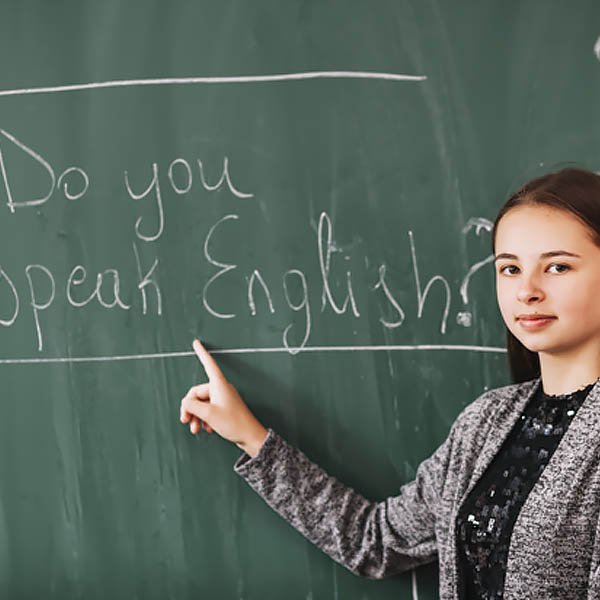
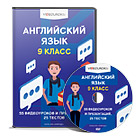
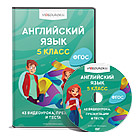
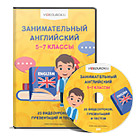
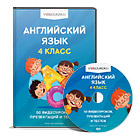
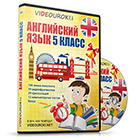
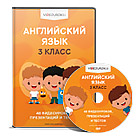
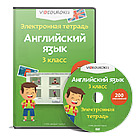
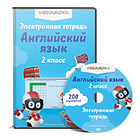
 Пробные задания ОГЭ-2024 (23.97 KB)
Пробные задания ОГЭ-2024 (23.97 KB)
 0
0 709
709 12
12 Нравится
0
Нравится
0


